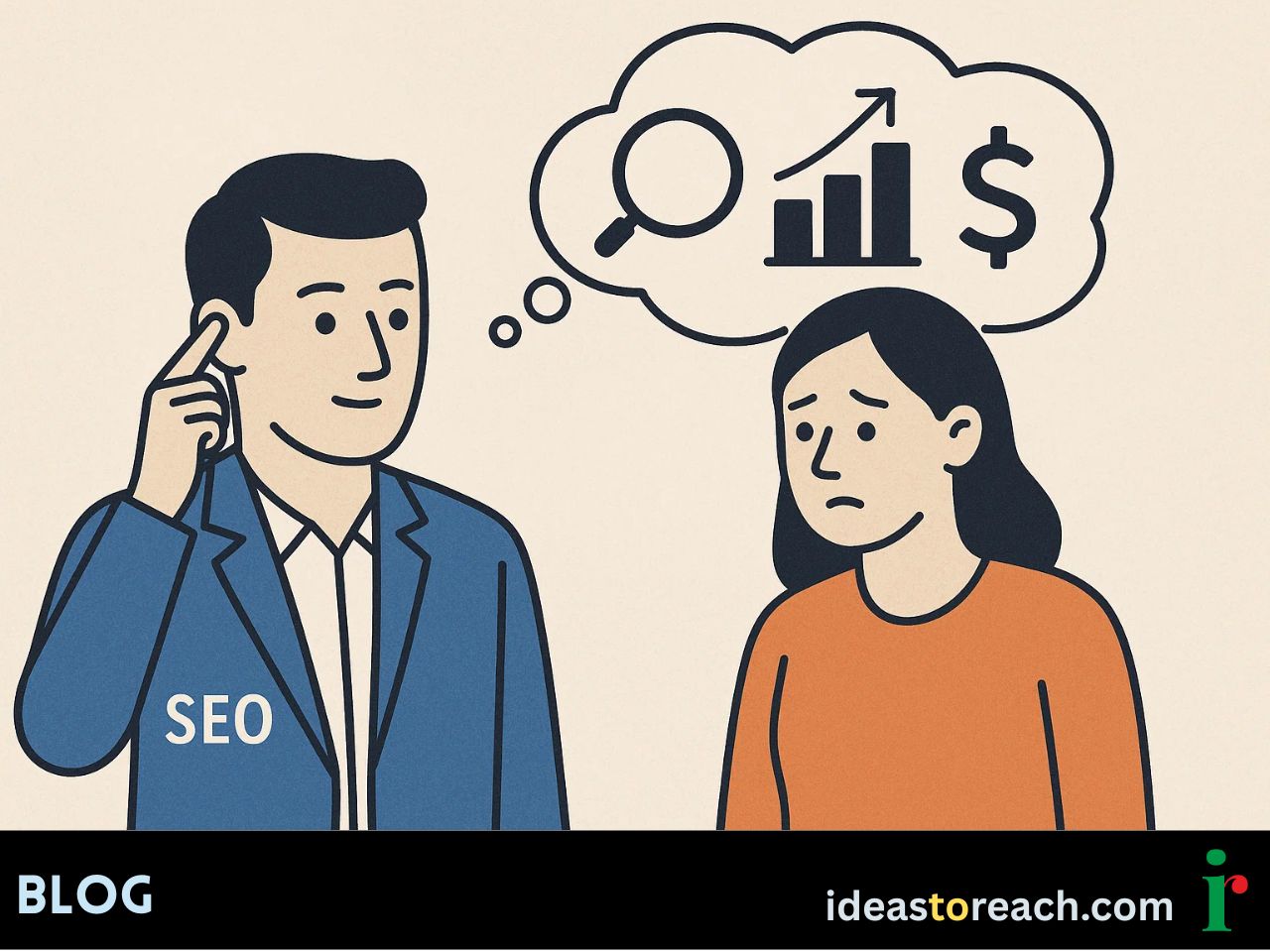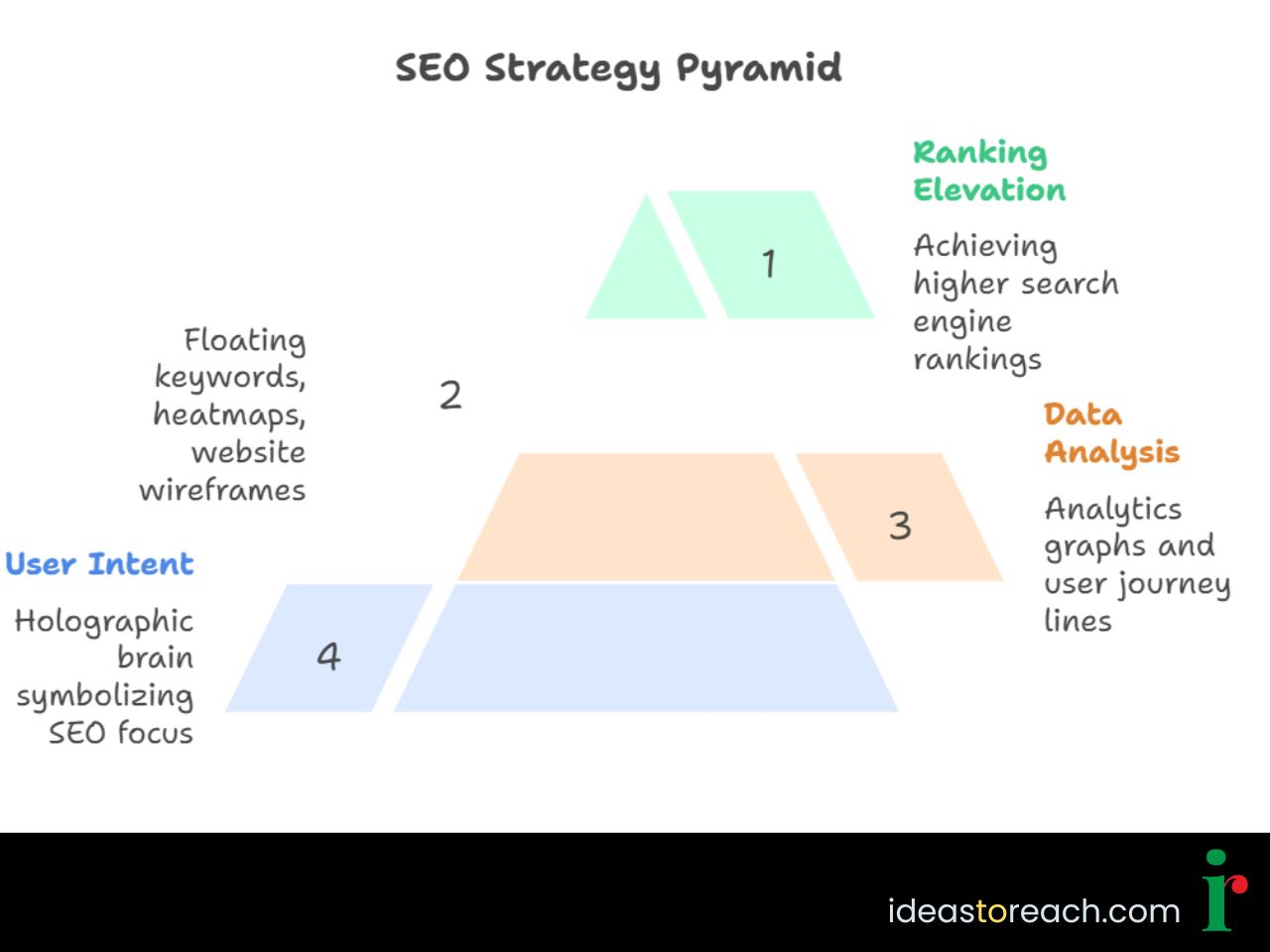
Imagine if your SEO could read minds and predict what your users truly want before they even type a search. In today’s digital-first world, that’s precisely what user intent SEO is designed to do. Rather than chasing keywords, modern marketers are decoding what drives search, make sure to understand the emotions, motivations, and intent behind every click.Welcome to the era of behaviour-driven SEO, where understanding your audience’s psychology is the key to higher rankings and meaningful engagement.
Traditional SEO was built on keywords. You found the correct phrases, added them to your site, and waited for rankings to climb. But as Google’s algorithms evolved, the game changed. Search engines no longer just match words, but they also interpret intent.
That’s the foundation of user intent SEO, which optimises for what users mean, not merely what they say. Whether someone wants information, a product, or a comparison, your content must align perfectly with that intent.
A trusted SEO agency for data-driven growth can help you translate behavioural data into strategies that predict intent before the competition does. By combining analytics, psychology, and UX insights, these agencies design SEO campaigns that feel almost intuitive.
Every keyword hides a human story. Someone types a query not just to find information but to solve a problem, make a decision, or ease a concern. Search behaviour analysis helps you uncover that hidden narrative.
Tools like Google Analytics 4 and Search Console queries reveal how users interact with your site, which pages they visit, how long they stay, and where they drop off. These insights guide improvements in conversion rate optimisation (CRO), layout, and overall user experience.
However, adapting to shifting search trends isn’t easy. As algorithms evolve, marketers face modern ranking challenges every marketer faces, from changing search intent patterns to personalised SERPs. Understanding user behaviour ensures your SEO strategy remains resilient against these fluctuations.
To master behaviour-driven SEO, you must think beyond data and start interpreting human psychology. Every scroll, click, or bounce reflects a user’s thought process. A high bounce rate may mean your content doesn’t match the promise of your headline or that the UX is confusing.
Heatmaps from tools like Hotjar and Microsoft Clarity visualise where attention drops off, while A/B testing helps refine page elements for maximum engagement. When combined with customer data, these insights turn your SEO into a predictive engine that feels almost like it can “read” user minds.

A strong SEO content strategy begins with mapping your customers' journey through SEO, encompassing awareness, consideration, and decision stages. Each stage demands content that reflects distinct intent signals.
Awareness: Publish informational blogs or guides that educate users and provide valuable insights.
Consideration: Offer comparison pages or case studies to support your product.
Decision: Optimise landing pages for clarity and persuasion.
To achieve this, build a strategic SEO roadmap aligned with user behaviour. Utilise insights from analytics tools and social listening platforms to craft content that aligns with how users think and behave.
Learning how to use customer data for SEO strategy allows you to connect patterns, predict needs, and position your brand as the best answer to your audience’s questions.
Even experienced marketers sometimes fall into old SEO traps. Overemphasising keywords, neglecting UX, or ignoring engagement signals can derail your intent-focused strategy.
Some common SEO mistakes that misread user intent include:
Stuffing content with irrelevant keywords.
Failing to optimise for mobile UX.
Ignoring post-click metrics like scroll depth and time on page.
Another frequent issue is keyword overlap. You must prevent keyword cannibalisation to refine user targeting. When multiple pages target similar search terms, they compete against each other, confusing both Google and your audience. Meanwhile, avoiding these errors ensures your content aligns perfectly with real-world intent.
Search algorithms evolve constantly. Each Google update changes how the system perceives intent, engagement, and user satisfaction. That’s why it’s crucial to understand how Google updates reshape intent-based SEO strategies.
For example, Core Web Vitals and user experience metrics now directly affect rankings. A seemingly small technical decision, such as lazy loading and its impact on user experience metrics, can significantly influence how quickly content becomes interactive. All this will ultimately affect how users perceive and interact with your page.
Using tools for analysing website user behaviour, such as Google Analytics 4, Hotjar, or Microsoft Clarity, you can identify patterns that reveal what users expect, where they struggle, and how they convert. This integration of technology and psychology is at the heart of user intent SEO.
What happens when you design your SEO around behaviour, not just keywords? You stop guessing and start anticipating.
SEO based on user behaviour, rather than keywords, involves understanding emotional triggers and creating experiences that satisfy them. For instance:
Someone searching “best running shoes” may want reviews, not product listings.
A user searching “affordable logo design” likely seeks pricing clarity before inspiration.
By tailoring your pages to these subtle differences in search intent, you’ll not only rank higher but also achieve deeper engagement and stronger conversions.
Ultimately, creating content that aligns with search intent is what distinguishes great SEO from good SEO. Every piece you publish should align with how users think, not just what they type.
Use Google Analytics to understand user intent, track where users land, what they click, and where they drop off. Then, refine your structure, visuals, and tone to meet their expectations.
Through continuous search behaviour analysis, your content becomes more intuitive and Google rewards that with better visibility. The result? A human-centred SEO strategy that mirrors real needs and drives measurable growth.
The future of SEO lies in empathy. By combining user intent SEO, behavioural data, and innovative technology, you create a marketing strategy that feels less like guesswork and more like a conversation.
When your SEO truly understands how users think, click, and convert, every element of your website becomes optimised. From design to copy, everything becomes part of a cohesive experience.
To be specific, your SEO doesn’t just rank higher, but it also connects more deeply.
User behaviour is more important because it focuses on the why behind a search. While keywords show what people are searching for, understanding user behaviour and search intent helps you create content that genuinely solves their problems. This further helps improve engagement, reduce bounce rate, and boost rankings.
Start by analysing your Google Search Console queries to see what users actually search for. Use Google Analytics 4’s Path Exploration to track how visitors move through your site. Then review social media discussions and customer service inquiries to discover real pain points in your audience’s language.
Combine multiple tools for a complete picture, as follows:
Google Analytics 4 and Search Console for search queries and navigation paths.
Hotjar or Microsoft Clarity for heatmaps and behaviour tracking.
GummySearch for social intent and Reddit analysis.
Absolutely. When your SEO aligns with customer journey SEO principles, you attract more qualified traffic. Creating content that accurately reflects real intent fosters trust and reduces friction, leading to increased conversions and long-term brand loyalty.